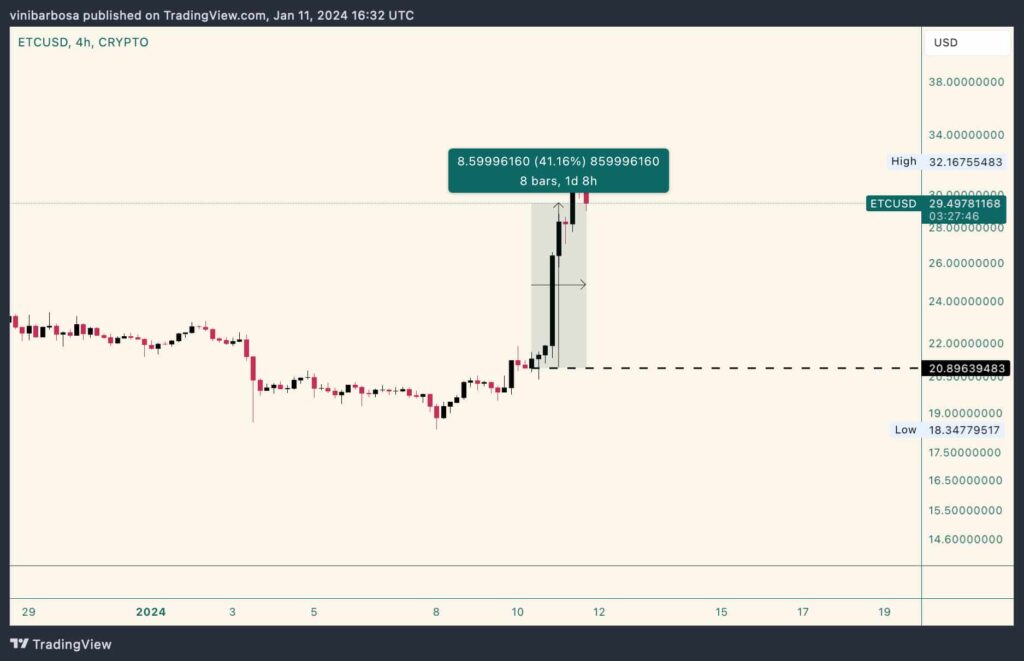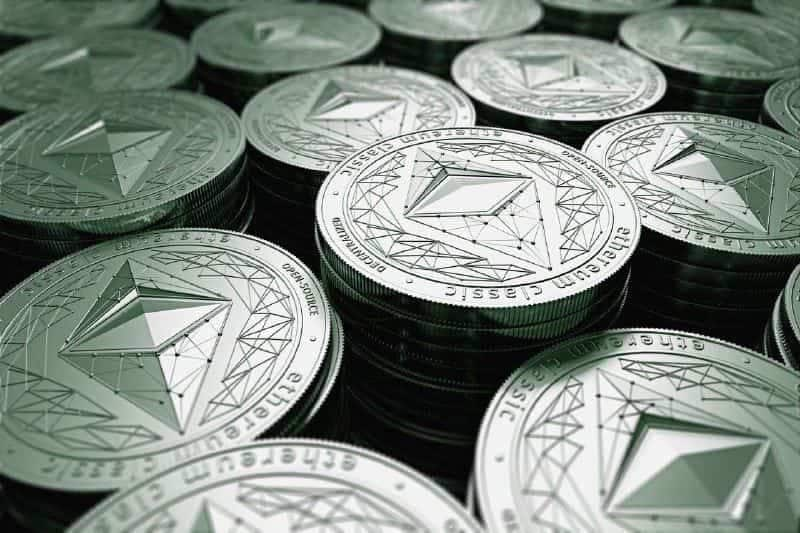In 2016, the DAO, an Ethereum-based entity, suffered a $150 million worth code exploit later known as “the DAO hack.” The community performed a hard fork to recover the funds, causing a split into Ethereum (ETH) and Ethereum Classic (ETC).
Notably, the Ethereum Classic surged from the most purist supporters, positioned against the hard fork to preserve the chain’s irreversibility. However, the reversed blockchain won the market competition, keeping the original name and the ticker ETH — further attracting more capital.
In 2022, Ethereum hard-forked again with “The Merge,” moving from a proof-of-work to a proof-of-stake network. Therefore, miners and proof-of-work supporters migrated to the classic chain, now with greater relevance.
Picks for you
ETC is currently trading at $29.50, surging by more than 41% since the Bitcoin ETF approval that moved the entire cryptocurrency market. In particular, the classic version reached a local high at $32.16 on January 11, still far behind the biggest chain.

Ethereum Classic (ETC) could reach $44 on January 31
Interestingly, CoinCodex’s machine learning algorithm believes ETC will continue its bull rally. Data retrieved by Finbold at the time of publication shows a forecasted price of $44.41 on January 31.

This projection would mean another 50% increase in Ethereum Classic from current prices. Meanwhile, the artificial intelligence believes ETC can reach even higher levels at $53 per token a few days before.
It is important to understand that Ethereum Classic has a significantly low hashrate and a smaller Web3 ecosystem. Essentially, ETC still faces security risks and lower adoption compared to Ethereum, challenging its growth in the competitive cryptocurrency market.
All things considered, the accuracy of the above projection will depend on the project’s ability to attract demand. Investors must remain cautious and correctly evaluate the risks and opportunities of Ethereum Classic.
Disclaimer: The content on this site should not be considered investment advice. Investing is speculative. When investing, your capital is at risk.








